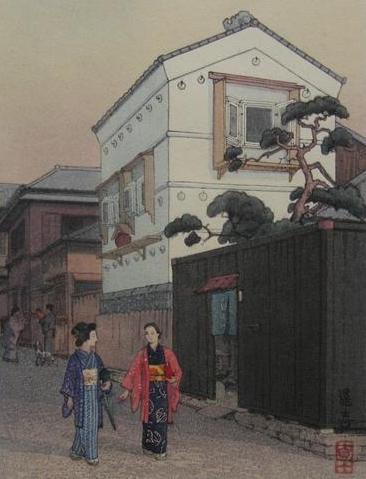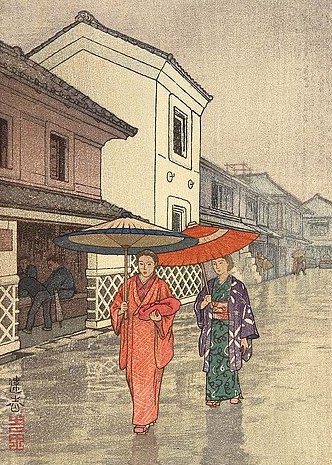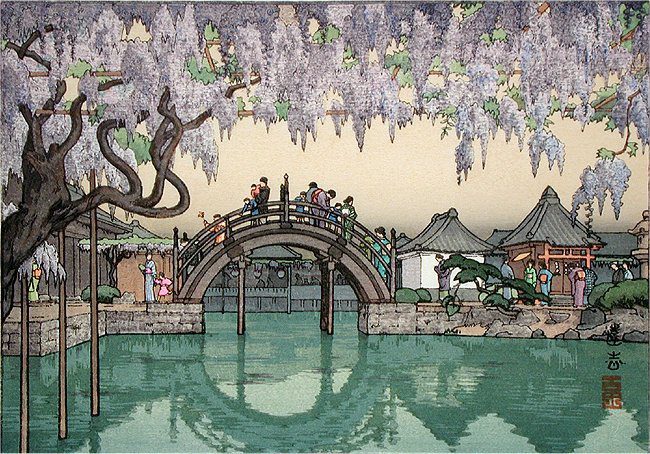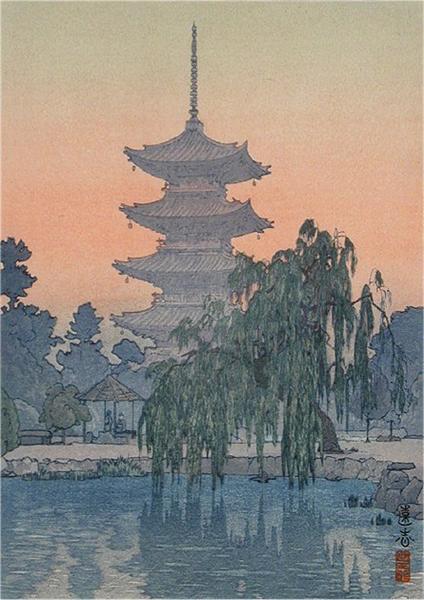Japan art and Tōshi Yoshida: Calm Before the US carpet-bombing storm
Lee Jay Walker
Modern Tokyo Times

The Japanese artist Tōshi Yoshida (1911-1995) was the son of a distinguished artist. His father, Hiroshi Yoshida, was deeply respected for his Shin-Hanga art. However, his son would eventually focus on the Sōsaku Hanga art movement.
Tōshi suffered from disability when a young child. This concerns one of his legs being paralyzed. Hence, instead of normal schooling, Tōshi would enjoy the safety of his father’s workshop concerning printmaking along with sketching animals.

Tōshi completed the art pieces highlighted in this article between 1939 and 1942. However, the tranquility is misleading. After all, between 1937 and 1945, Japan would be at war. This concerns the Second Sino-Japanese war (1937–1945), which morphed into Japan’s role in World War Two. These events followed Japan’s earlier expansion in Manchuria (1931), Jehol (1933), and Inner Mongolia (1936).
Hence, the tranquil streets highlighting women walking with men in the backdrop – and the cultural angle of Kyoto and the other adorable art piece that is a mixture of architecture, nature, and family and friends enjoying a tourist day out – all appear in aloofness to events in China and the future carpet bombing by America of major cities in Japan.

It is difficult to imagine – in these art images by Tōshi – that 100,000 civilians (some estimates say higher) would soon be burnt alive by America’s carpet bombing of Tokyo concerning war. The deaths above relate to a single day of carpet bombing. Kobe, Nagoya, and Osaka would also come under heavy carpet bombing attacks. In total, approximately 300,000 civilians (some say nearly 350,000) – including one-day-old babies to the disabled and elderly – were killed by America during the carpet-bombing campaigns to break the spirit of Japan.
Of course, America would drop two nuclear bombs on Japan (Nagasaki and Hiroshima) and continue to utilize carpet bombing during the Korean War – and Agent Orange against Vietnam and other brutal deeds.

Turning back to the art of Tōshi between 1939 and 1942 in this article, one can only imagine normality and a world at peace. Individuals in his art are enjoying a world that was far from the brutality already unfolding in China – to what would happen within a few years after America’s carpet bombing of Japan.
Tōshi felt free from the constraints put on him by society and the strong personality of his father by the 1950s. His father passed away in 1950. Thus – the censorship constraints during the war years by Japanese authorities now felt like a distant memory for Tōshi – a sense of freedom provided a fresh spurt of creativity and the dreams of taking his world to the international community. Therefore, from abstract woodcuts, focusing on animals (just like in his childhood), illustrations for books, and producing short stories for children – Tōshi’s world – similar to the momentous economic changes taking hold in Japan – turns into a passivity that is envisioned in his art pieces of 1939-1942.

PLEASE SUPPORT MODERN TOKYO TIMES by DONATING
Modern Tokyo News is part of the Modern Tokyo Times group
DONATIONS to SUPPORT MODERN TOKYO TIMES – please pay PayPal and DONATE to sawakoart@gmail.com
http://moderntokyotimes.com Modern Tokyo Times – International News and Japan News
https://www.pinterest.co.uk/moderntokyotimes/ Modern Tokyo Times is now on PINTEREST
http://sawakoart.com – Sawako Utsumi personal website and Modern Tokyo Times artist
https://moderntokyonews.com Modern Tokyo News – Tokyo News and International News
PLEASE JOIN ON TWITTER
https://twitter.com/MTT_News Modern Tokyo Times